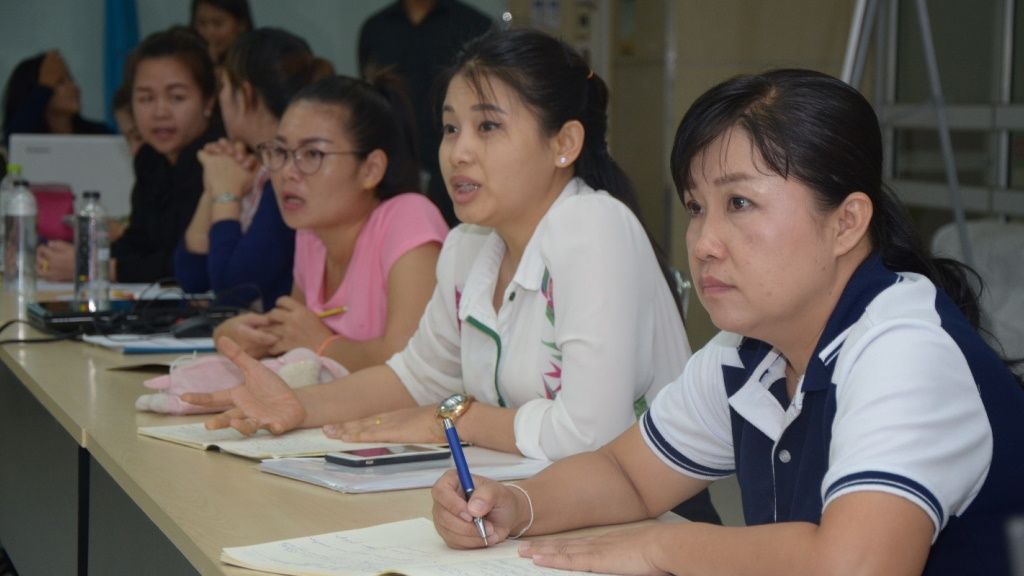Empowering Women in Public Service in Lao PDR

A dream come true: Sonny Sisomvang (seated at the rightmost) at the Thammasat University in Bangkok, Thailand, where she eventually graduated with a master's degree in public health through the Health Sector Governance Program. Photo: Public Health Faculty, Thammasat University
Sonny Sisomvang found work quickly after graduating from the Lao National University of Health Sciences in 1997, joining Vannakhone, a private pharmaceutical company. Six years later, she went into public service, joining the Ministry of Health. The move proved fortuitous for Ms. Sisomvang, who wanted to earn a master’s degree in public health but had previously lacked the means and the opportunity. She had also been held back by a lack of confidence in presenting her ideas at work, feeling that other staff had more knowledge and experience.
Everything changed when opportunity came knocking in the form of a Health Sector Governance Program being implemented by the Government of the Lao People’s Democratic Republic (Lao PDR) between 2015-2020. The program offered trainings, fellowships, and study tours to 2,132 Ministry of Health employees. At least half of the beneficiaries were supposed to be women, and in the end 1,226 female employees, or 57% of the total, were selected. One of them was Ms. Sisomvang, who, along with six other women, obtained a master’s degree in public health at Thammasat University in Thailand.
While gender attitudes are evolving in the Lao PDR—with support growing for women and men to enjoy equal opportunities for growth and success—women have traditionally taken care of their families and household matters. Ms. Sisomvang lives with her husband, who runs a business, and their two children in Nongnial village in the Sikottabong district of Vientiane, the Lao PDR capital. She initially thought it would be difficult to leave home to study abroad, given the financial burden and the burden on her family. However, her husband was supportive and agreed to take care of their 10-year-old son and 5-year-old daughter.
“My long-held dream of getting a master’s degree finally came true,” she said.
Ms. Sisomvang, now 44, has continued to hone her skills in strategic planning, statistical management, and public speaking. She has also been promoted to Deputy Director of the International Relations Division at the Ministry of Health.
“I’m more confident now to speak up in meetings,” she said. “I’m also more knowledgeable about health management, including prevention planning, treatment planning, and statistical systems.”
Capacity development in the area of human resource management is greatly needed in the Lao PDR’s health sector. At the Ministry of Health, strengthening the staff’s capacity for reliable planning of prevention, treatment, and managing statistical systems has contributed positively to the well-being of employees—as well as health system beneficiaries, who received better services.
The Health Sector Governance Program will continue to work for women’s development as part of the Ministry of Health’s first ever gender strategy, being implemented from 2019 to 2025.
Accelerating progress on gender equality is a key priority for the Asian Development Bank (ADB). ADB approved a programmatic approach under the Lao PDR’s Health Sector Governance Program in August 2015. Implemented from October 2015 to March 2020, the program helped the government move toward its goal of universal health care by 2025 and improved delivery of health services, particularly for the poor, women, and children.
The program focused on four components: improving the health sector reform process; implementing the Health Equity Fund and improved free maternal, neonatal, and child health care schemes; strengthening human resource management capacity; and enhancing the health sector’s financial management system.
This case study was first published on the ADB website.
Last Updated: 1 July 2021
